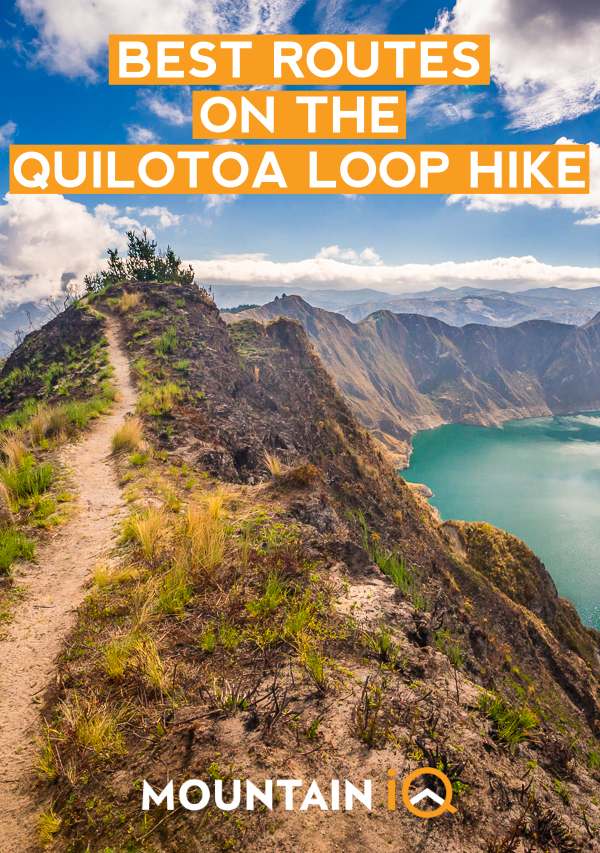Ecuador is home to some of the best hiking trails in the world and the Quilotoa Loop Hike is one of them! This self-guided multi-day hike moves through deep valleys, small traditional villages and farmlands and over rolling green hills in the Central Highlands of Ecuador.
The trail’s highlight is reaching the emerald coloured Quilotoa Lake that has formed in the crater of a once active volcano, 3,900m high in the Ecuadorian Andes.
Your hiking adventure either begins or ends at Laguna de Quilotoa. Whatever direction you decide to take, here is a complete guide to hiking the fascinating Quilotoa Loop.
Trekking To Quilotoa Lake FAQs
When is the best time to hike the Quilotoa Loop?
It is possible to visit Quilotoa Lake at any time of the year, but the drier months will bring you clearer skies and better weather for a multi-day hike.
Between June and September are the dry months in Ecuador and therefore this is the best time to hike the Quilotoa Loop trails.
The weather can be unpredictable in Ecuador and the evenings get very cold, so be sure to pack for all weather conditions and just assume that it will rain.
Where do you start the Quilotoa Loop Hike?
The great thing about this trek is the flexibility of where to start, and how easily accessible it is from the city of Quito. You can begin your hike almost anywhere along the trail. Most hikers begin their Ecuadorian adventure in Latacunga or Quito.
You can start the trek from Sigchos or Isinlivi depending on your timeline, or you can start in Quilotoa and make your way to Sigchos. However, this means you will see the highlight of the trek at the beginning of your journey so we recommend hiking from Sigchos to Quilotoa.
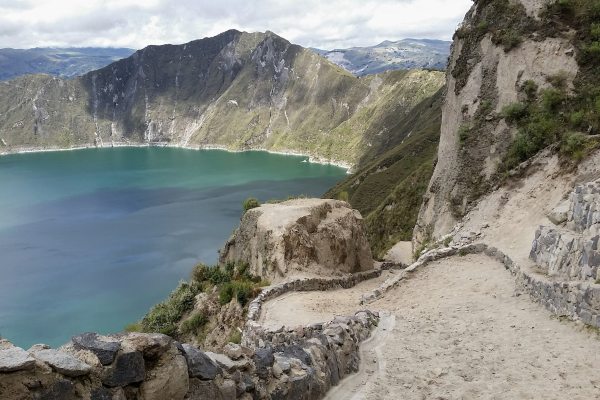
Photo by Mike
Starting in Latacunga
Latacunga is 2 hours from Quito and this is where most hikers begin their travels in Ecuador. There are regular buses from here to Isinlivi, Sigchos, Chugchilan and Quilotoa.
Depending on where you have chosen to start, you can catch a bus from Latacunga to your desired location. The bus from Latacunga to Sigchos takes around 2 hours and costs about $4, although they are not very frequent so check the schedule for times.
Starting in Quito
You will be able to catch a bus from Terminal Quitumbe in Quito to Latacunga for around $3 and they depart every 30 minutes. Once in Latacunga, you can hire a car to get to Quilotoa for around $35.
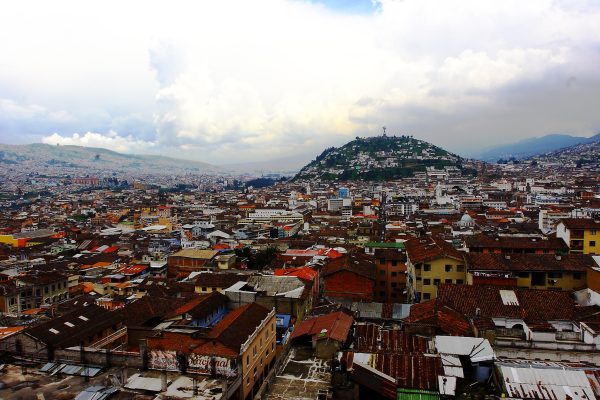
Photo by Roman Korzh
Day Trip Options
There are also day trips available for visiting Quilotoa Lake which cost about $75 and include a round-trip and direct transfers.
Buses are not available on Thursdays due to the market day that takes place in Saquisili. If you can fit a visit to the markets into your itinerary, you won't regret it. It's a great way to experience the local culture and cuisine.
You can purchase bus tickets in advance but it is not necessary.
Where should you stay in Latacunga?
Staying a night in Latacunga is recommended before heading off on the Quilotoa Loop Hike. Here you can acclimatize properly, and you will find accommodation that offers to store your baggage. This way you only need to take the essentials with you on the hike.
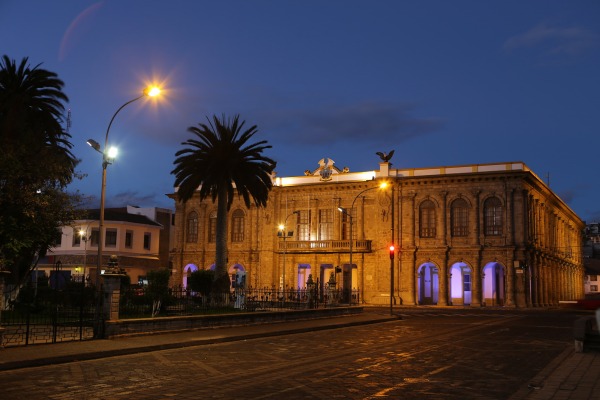
Photo by François Bianco
Hostal Cafe Tiana ($15)
This is the most popular hostel in the city. Their prices are reasonable and you can be assured your baggage is stored safely (you will need to bring a padlock). They charge around $2 per day to store your baggage and the room is secure with cameras and a small locker for valuables. While it is not the prettiest accommodation, it is good value for money.
Latacunga Hostal ($18)
This hostel provides linen and toiletries for your stay. There is free WiFi available and you'll get a delicious breakfast included in the price.
La Posada ($10)
Great budget-friendly accommodation with baggage storage.
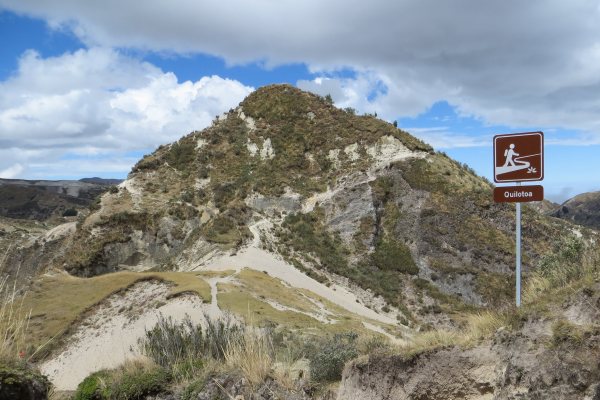
Photo by Katarina
What routes are there to hike the Quilotoa Loop?
Depending on your itinerary and pace, it will take you two to five days to complete the full trek. The entire loop is around 40 km long. Typically the hike should take two nights and three days.
It’s possible to do a day trip to Laguna de Quilotoa, but to get the most from this experience, hiking the whole loop or the traditional route is highly recommended!
You have the option to hike from Sigchos to Quilotoa or from the crater to Sigchos. Starting at the crater has been deemed the easier trail due to it being downhill most of the way, however, the more rewarding trail is ending at the crater. While day one is difficult when hiking Sigchos to Quilotoa, it really is worth the journey.
Each night is spent in a village so if your plans change, you can easily catch a bus out of the village and back to the city. You will most likely be in Latacunga at the beginning of your trip, the hike does not start from here, but you can catch a bus to any of the starting points along the trek.
There are various routes to take due to the flexibility of the trail. Here are a few popular options.
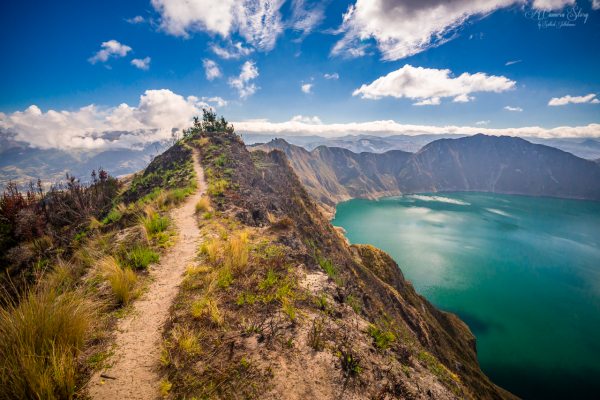
Photo by Sathish
The Traditional Route (Counterclockwise)
- Duration: 4 Days
- Direction: Sigchos - Isinlivi - Chugchilan - Quilotoa
- Day 1: Bus from Latacunga to Sigchos (2 hours)
- Day 2: Uphill hike alternating between trail and paved roads from Sigchos to Isinlivi (4 hours).
- Day 3: From Isinlivi you'll follow a stream, cross the river, take a right up a steep hill to a paved road which takes you to Chugchilan (5 hours).
- Day 4: Hike into a valley and over the other side passing through small towns and heading up a zig-zagging road up to Laguna de Quilotoa (5 hours). The hike continues along the upper rim of the crater (3 hours). From here you can catch a bus or hop on the back of a van back to Latacunga, otherwise stay the night and head to the crater for an early morning sunrise.

Photo by Omar Jabri
The Reverse Route (Clockwise)
- Duration: 5 Days
- Direction: Quilotoa - Chugchilan - Isinlivi - Sigchos
- Day 1: Catch the bus from Latacunga to Quilotoa (2 hours). Stay overnight to acclimatize.
- Day 2: Hike around the rim of Quilotoa Lake and then head downhill to Chugchilan (4 hours).
- Day 3: Downhill and relatively flat hike to Isinlivi with a steep ending (4 hours).
- Day 4: An easy downhill trek to Sigchos with alternating paths and paved roads (3 hours).
- Day 5: Catch the bus back to Latacunga (3 hours).
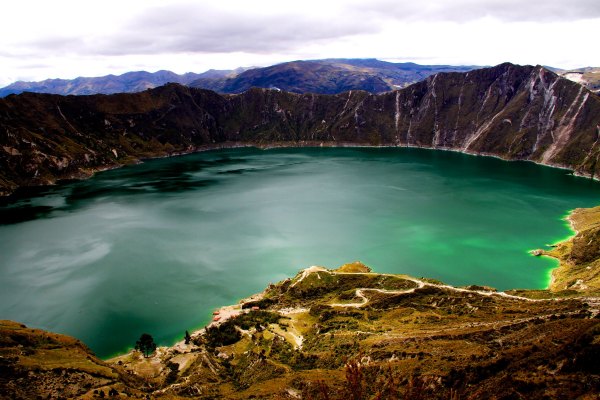
Photo by Ian Masias
The Easy Route
- Duration: 2 Days
- Direction: Quilotoa - Chugchilan
- Day 1: Head out on the bus from Latacunga to Quilotoa (2 hours).
- Day 2: Take your time and hike around the rum of Laguna de Quilotoa, and then head downhill to Chugchilan (4 hours). Stay the evening, or hire a car back to Latacunga or Quito.
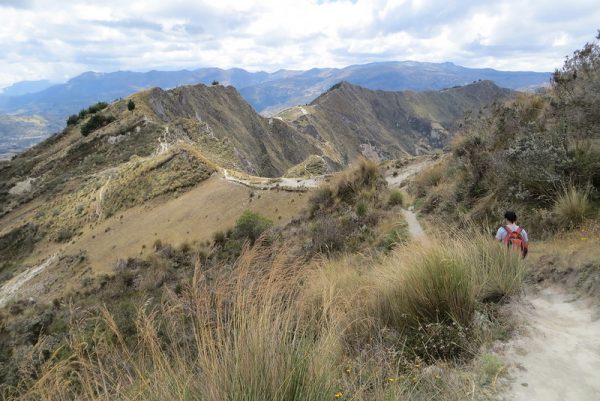
Photo by Katarina
The Full Loop
- Duration: 6 Days
- Direction: Isinlivi - Malingua Pamba - Quilotoa - Chugchilan - Isinlivi
- Day 1: Catch a bus from Latacunga to Isinlivi (2 hours).
- Day 2: Head towards Malingua Pamba (4 hours) where you will need to camp for the evening as there are not hostels in the area.
- Day 3: Today you hike to Quilotoa (5 hours) and stay overnight.
- Day 4: Explore the rim of Quilotoa Lake and then head on the downhill path the Chugchilan (4 hours).
- Day 5: An easier flat and downhill path to Isinlivi ending with a steep incline (4 hours).
- Day 6: Head out on an early bus to Latacunga (4 hours).
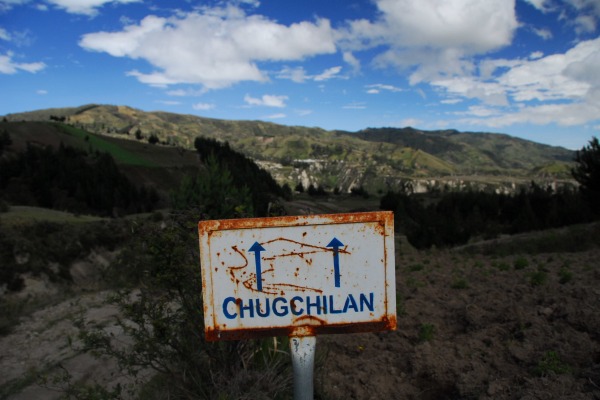
Photo by Brennan Paezold
What accommodation is available along the Quilotoa Loop?
Along the trail there are various accommodation options for hikers. You can stay in a hostel, a hotel, bed and breakfast or even camp. Most hostels have campsites available for those who want to unwind in nature, but be warned, it will get freezing at night so pack appropriately if you are camping.
The most popular option for hikers doing the Quilotoa Loop is staying in a hostel. The hostels along the Quilotoa Loop are said to be some of the best hostel accommodations in Ecuador.
Hostels normally include dinner and breakfast and usually have WiFi and hot water available. Packed lunches are also available for the next day and cost around $7, but you will save a lot of money purchasing snacks in Latacunga.
We've listed some of the most popular hostels along the route (Isinlivi, Chugchilan and Quilotoa) below.
Location | Accomodation | Amenities | Cost |
|---|---|---|---|
Isinlivi | Hostal Llullu Lama | Popular accommodation Excellent food Jacuzzi Sauna and steam room | $25 (incl. dinner and breakfast) $10 for Spa entrance |
Hostat Taita Cristobal | Excellent food Baggage storage WiFi | $35 (incl. dinner and breakfast) | |
Chugchilan | Hostal El Vaquero | Awesome accomodation Spa | $18 (incl. dinner and breakfast) |
Hostel Cloud Forest | Best value for money WiFi | $15 (incl. dinner and breakfast) | |
Mama Hilda | Rustic design Environmentally friendly hostel Family-run | $32 (incl. dinner and breakfast) | |
Quilotoa | Hostal Chukirawa | Close to Quilotoa Lake Wood burning stove in room Very cozy | $35 (incl. dinner and breakfast) |
Hosteria Alpaka | Family-run Comfortable rooms Reasonable rates | $30 (incl. dinner and breakfast) |
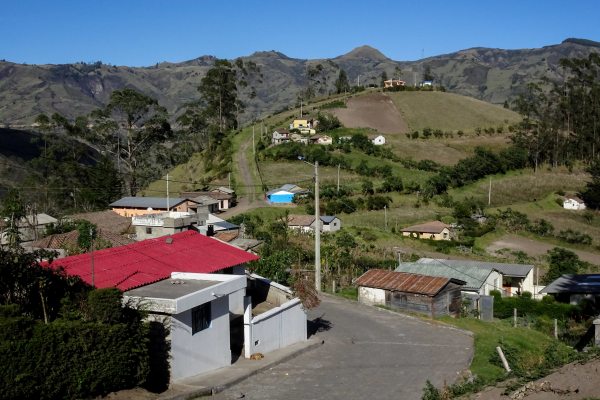
Photo by Rainer Voegeli
How difficult is hiking the Quilotoa Loop?
Hiking the Quilotoa Loop can be done independently and even solo. The high altitude and navigating will be your main points of concern for this trail, however, trail markings have improved over the years. Keep an eye out for the red and yellow markers which let you know you are on the correct path.
Many hikers who have completed the trail say that getting lost is inevitable so don't panic - it's part of the adventure! Hostels will provide you with a map and instructions to get to Quilotoa Lake, but it is a good idea to couple this with Maps.me. Download the map before beginning your trek. It does work offline, but you cannot guarantee when you will be around WiFi.
You will come across many locals along the way and they use these routes all the time. Don't be shy to ask for directions, they are usually very happy to help. Remember that they are used to the landscape and altitude, so what takes them 30 minutes will take you much longer.
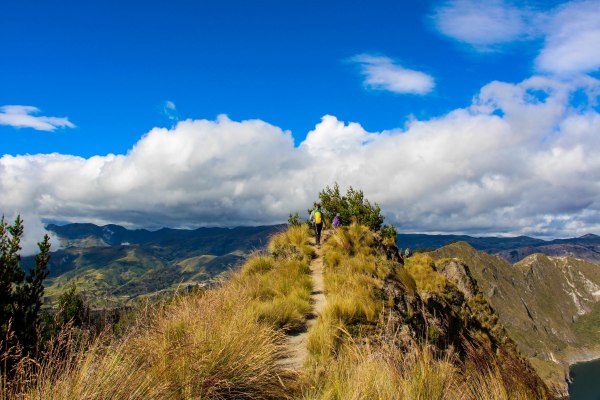
Photo by Robinson Recalde
Acclimatization is very important before starting the hike. From day 1 to day 3, you will have experienced a 1,000m elevation gain which can be significant if not properly acclimatized. Quilotoa sits at 3,800m, so it is a good idea to spend some time in Latacunga before beginning the hike.
You will be hiking around 4 to 6 hours a day along some tough terrain and areas with very steep inclines. If you have a good fitness level and stamina, then you will be able to complete the hike.
How much does the Quilotoa Loop cost?
The Quilotoa Loop Hike is known as a budget-friendly trek. Overall, you will probably spend around $200 per person including accommodation, food and transport.
Costs below are approximate, please check pricing at the time of your booking.
Product Name | Price |
|---|---|
Bus: Quito - Latacunga Bus: Latacunga - Sigchos Bus: Latacunga - Quito | $3 $4 $4 |
Car Hire: Latacunga - Quilotoa | $35 |
Day Trips to Quilotoa Lake | $75 |
Hostel Accommodation (Including dinner and breakfast) | $20 - $45 per night |
Baggage Storage | $2 per day |
Food | $7 |
Beers | $5 |
What gear do I need?
This is a multi-day hike, so making sure you have packed everything you need is highly important to complete the trail. Pack light but pack appropriately to make it through the days you will be hiking. Leaving your luggage in storage at Latacunga will help you carry only the essentials for your hike.
- Backpack (30 – 40L): Waist straps and back support are important for a multi-day hike. Check out our recommended backpacks.
- Backpack Cover: Essential for keeping your items dry in unpredictable weather conditions.
- Rain and Windproof Jacket: The weather is unpredictable on the Quilotoa Loop Hike. Bring waterproof clothing to protect you from the elements.
- Trekking Poles: It's very handy to have trekking poles on the Quilotoa Loop Hike. The terrain can be steep and strenuous on the knees. They also double as protection from the stray dogs along the trail. We recommend the Black Diamond Alpine Carbon Cork trekking poles.
- Sleeping Bag, Sleeping Pad and Tent: Only essential if you are camping. If you have booked into a hostel, you will not need these items.
Clothing
- Down Jacket
- Waterproof Jacket
- Beanie
- Cap / Hat
- Hiking Boots
- Hiking Socks
- Thick Socks (For sleeping)
- Gloves
- Long Sleeved Shirt
- Short Sleeved Shirt
- Hiking Pants
- Leggings
- Shorts
- Swimsuit (For the Jacuzzi at Llullu Llama)
- Comfy Shoes / Flops (For resting at the hostel. Give those feet a break!)
Accessories
- Water Bottles
- Headlamp (optional)
- Steripen / Water Purification Tablets / Water Filter Bottle
- Dry bags
- Power bank
- Camera
- GPS Watch
- Sunglasses
- Snacks
- Duct Tape
- Phone
- Charger
- Folding Knife
Toiletries
- Shampoo and Shower Gel (Decant into smaller bottles to last your whole trip)
- Toothpaste
- Toothbrush
- Wet Wipes
- Hand Sanitizer
- Bug Repellent
- Sunblock
- Travel brush
- Lip balm
- First Aid Kit
- Deodorant
- Electrolytes
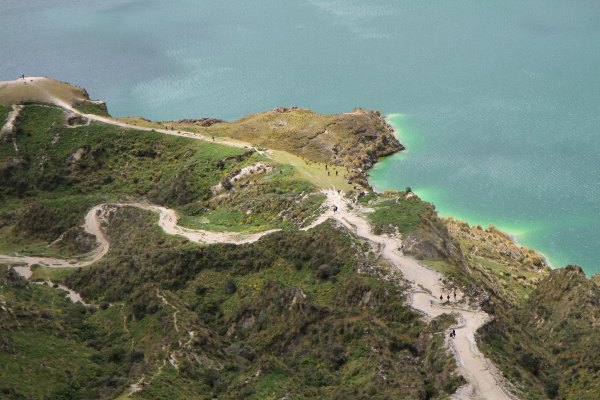
Photo by Belinda Grasnick
Important Information
Food: Lacatunga has a large grocery store to stock up on snacks and food at affordable prices. Hostels typically include dinner and breakfast, and many offer a packed lunch for around $6.
Water: It is not a good idea to drink the water in Ecuador. Hostels will provide potable water for around 50 cents, so you are able to fill up your water bottles each day before heading on your trek. You should need around 2L per day. You are welcome to bring along some water purifying tablets to be extra safe.
Cash: There are not ATMs along the route so be sure you have enough cash on you to last the whole trip.
ID / Passport: Hostels will require identification when checking in so be sure to have this on you at all times.
Directions / Map: Don't forget to get this from your hostel. Highly important for navigating the Quilotoa Loop.
What will you see on the Quilotoa hike?
Locals
The hike takes you through many farm properties of the local Ecuadorians. They are reserved and quiet people. Please take care to respect their land and remember that this is their home. Many will be going about their work on the farm, others will be passing you on the trail. If you get stuck, don't hesitate to ask them for some help! Just remember what takes them 30 minutes, will definitely take you longer.
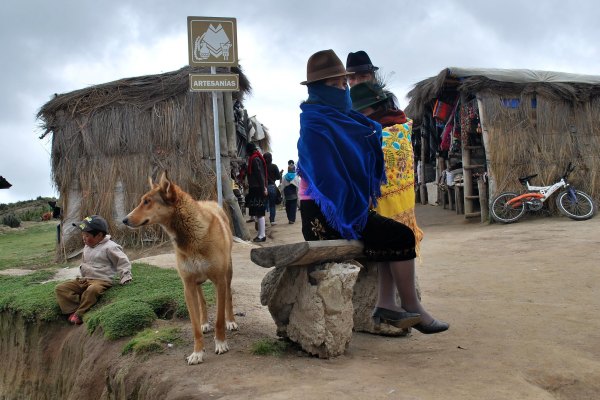
Photo by Marcia Ramalho
Children
Many children will be intrigued by you and will run to greet you. Hikers usually bring candy from Latacunga to hand out to the children, but make sure to ask the parents first if they are close by. Preferably don't give cash as this becomes encouraged by the parents.
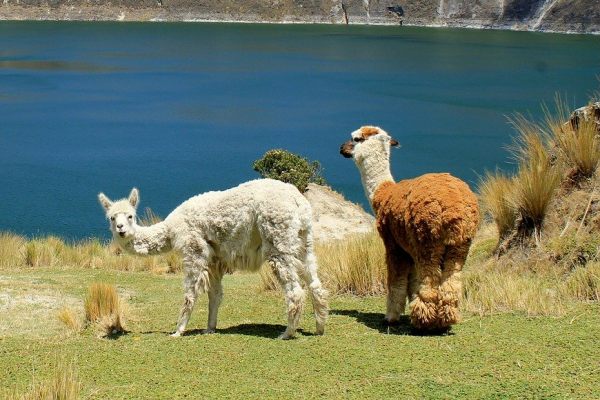
Photo by Public Domain
Animals
You will come across many stray dogs on the trail. Some are farm dogs used for protection by their owners and so they can be very territorial. If you have a hiking pole, you can use this to scare them off if they get too close. Otherwise, it is a good idea to bring a stick with you for protection if needed. There is also plenty of livestock along the trail, respect their space and let them graze peacefully in their fields.
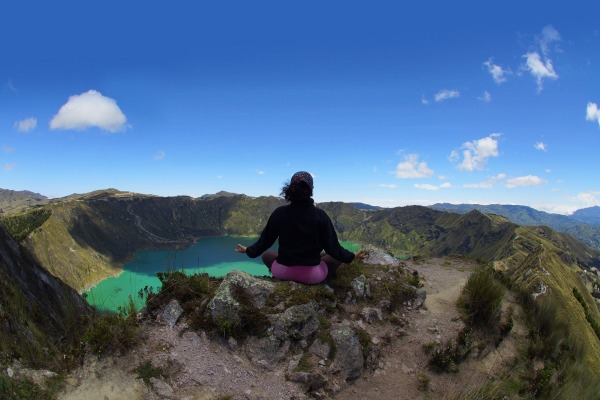
Photo by Alejandro Miranda
Can I hike the Quilotoa Loop solo?
Trekking the Quilotoa Loop is considered safe for solo hiking. Hiking solo is quite popular on the trail and you will meet fellow hikers along the way and at the hostels.
Altitude sickness is something you may have to deal with on the hike so make sure you acclimatize properly beforehand.
There are also a lot of stray dogs along the trails so it’s a good idea to bring a stick or use your trekking pole to scare them off if you are feeling threatened. Other animals you may come across like cattle should be easy to avoid if necessary.
Other South American Hiking Articles:
